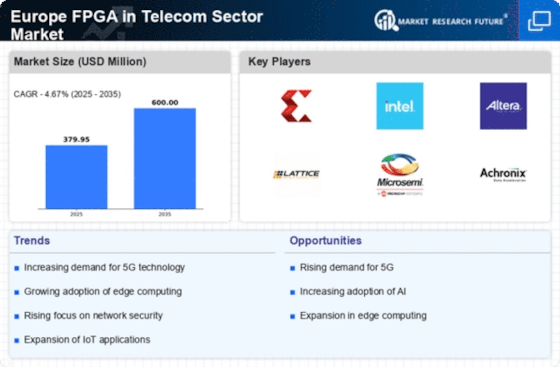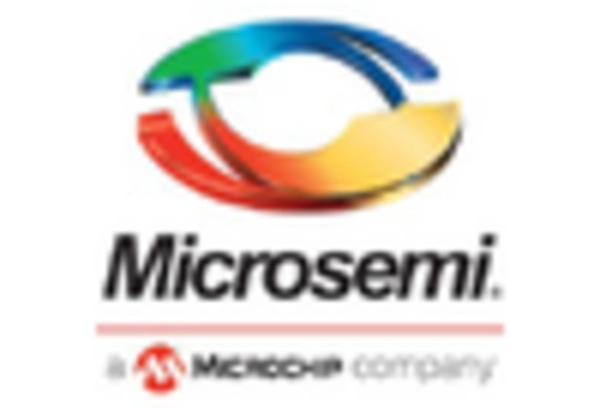Emergence of IoT Applications
The fpga in-telecom-sector market is being propelled by the rapid emergence of Internet of Things (IoT) applications. With the proliferation of connected devices, there is an increasing demand for robust and flexible communication solutions. FPGAs are uniquely positioned to support the diverse requirements of IoT applications, including real-time data processing and low-latency communication. In Europe, the IoT market is expected to reach €1 trillion by 2025, indicating a substantial growth trajectory. This growth presents a significant opportunity for FPGAs to facilitate seamless connectivity and data management across various IoT platforms, thereby enhancing the overall telecom infrastructure.
Shift Towards Network Virtualization
The fpga in-telecom-sector market is significantly influenced by the ongoing shift towards network virtualization. This trend allows telecom operators to optimize their network resources and improve service delivery. FPGAs play a pivotal role in this transformation by enabling the implementation of software-defined networking (SDN) and network functions virtualization (NFV). These technologies facilitate the dynamic allocation of network resources, enhancing operational efficiency. As of 2025, it is estimated that around 30% of telecom networks in Europe will be virtualized, creating a substantial opportunity for FPGA integration. This shift not only reduces operational costs but also enhances the agility and responsiveness of telecom services.
Growing Emphasis on Energy Efficiency
The fpga in-telecom-sector market is witnessing a growing emphasis on energy efficiency as telecom operators seek to reduce operational costs and environmental impact. FPGAs are recognized for their ability to deliver high performance while consuming less power compared to traditional processing solutions. This characteristic is particularly appealing in the context of increasing energy costs and sustainability goals. In Europe, it is estimated that energy consumption in the telecom sector could be reduced by up to 20% through the adoption of energy-efficient technologies, including FPGAs. This trend not only aligns with corporate sustainability initiatives but also enhances the overall competitiveness of telecom operators in a rapidly evolving market.
Regulatory Push for Enhanced Connectivity
The fpga in-telecom-sector market is also influenced by regulatory initiatives aimed at enhancing connectivity across Europe. Governments and regulatory bodies are increasingly advocating for improved telecommunications infrastructure to support economic growth and digital transformation. This regulatory push often translates into increased investments in advanced technologies, including FPGAs. As of 2025, it is anticipated that public and private investments in telecom infrastructure will exceed €100 billion in Europe. Such investments are likely to drive the adoption of FPGAs, as they offer the necessary performance and flexibility to meet regulatory standards and consumer expectations.
Rising Demand for High-Speed Data Transmission
The fpga in-telecom-sector market is experiencing a notable surge in demand for high-speed data transmission solutions. This demand is primarily driven by the increasing need for efficient communication networks that can handle vast amounts of data. As telecommunications companies strive to enhance their service offerings, the integration of FPGAs allows for rapid data processing and reduced latency. Recent data indicates that the European telecom sector is projected to grow at a CAGR of approximately 8% over the next five years, further emphasizing the necessity for advanced technologies. FPGAs provide the flexibility and scalability required to meet these evolving demands, making them a critical component in the infrastructure of modern telecommunications.

















Leave a Comment